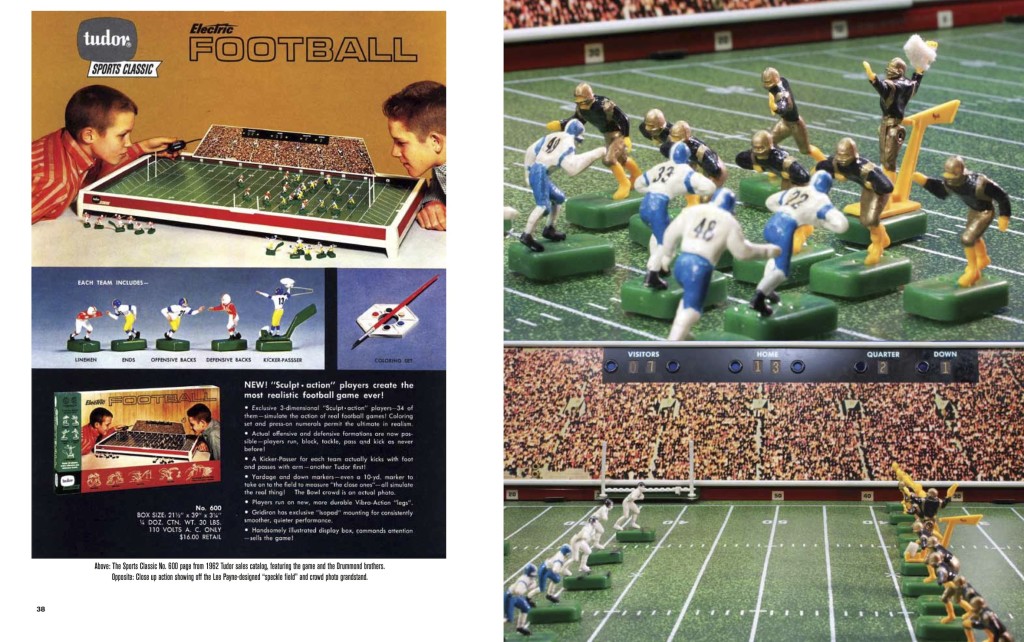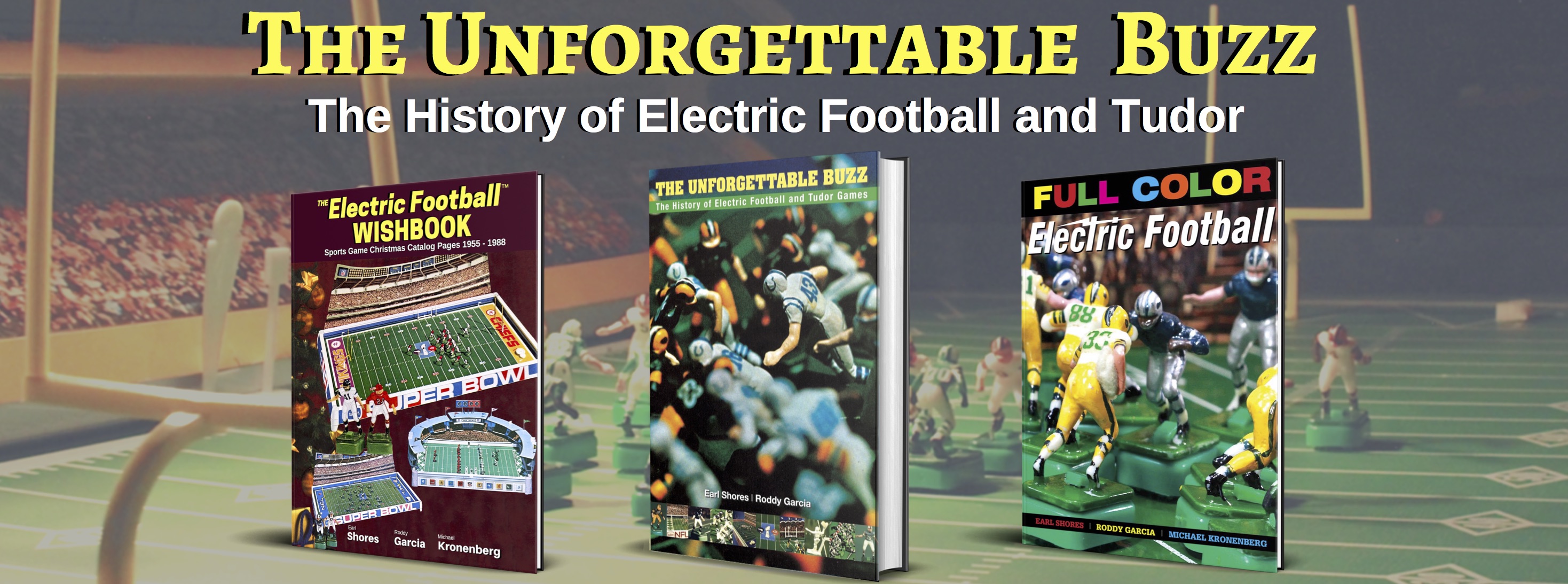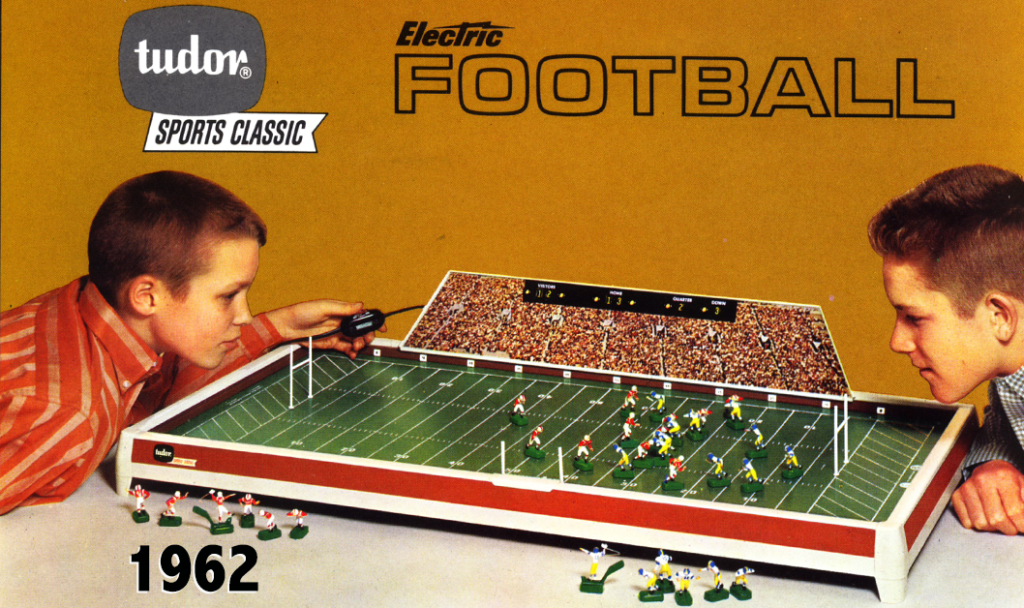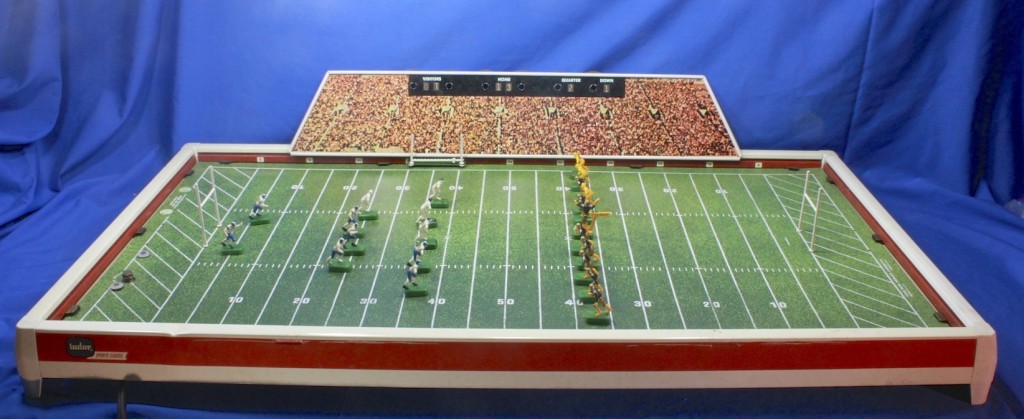Our Electric Football Top 20 Countdown moves on to game No. 7… the 1962 Tudor Sports Classic No. 600.
Despite not having any NFL licensing, the No. 600 is one of the most important games in all of Electric Football. The game includes these Electric Football “Firsts:”
— The first game designed entirely by Lee Payne.
— First large game made by Tudor.
— First game with a crowd photo grandstand (Gotham’s crowds were hand drawn).
— First game with a photo illustrated box – a color photo at that.
— Finally, the first game with true 3-D players.
But all of these “firsts” didn’t happen out of the blue. They were a response to the groundbreaking Gotham NFL G-1500 that appeared in 1961. The No. 600 was Tudor’s attempt to maintain its long-held dominance in Electric Football.
Thanks to Lee Payne’s efforts the No. 600 is a stunning game. From the tasteful maroon accent colors on the frame, to the lithographed yard line markers, to the metal grandstand with an Ivy League Palmer Stadium crowd (Princeton), to the amazing “speckle” grass field…Lee had done something special with the No. 600.
Tudor’s new players, known as the “Gorilla” players (see Chapters 13 and 14 of The Unforgettable Buzz), weren’t quite “all” that Lee and Normans Sas had hoped. But they were a significant improvement over Gotham’s flat “Martian” players. And from a distance they certainly look good on game.

Pages 30 and 31 from our Full Color Electric Football book.
To attach the fiberboard field to the oversized 36” x 20” frame Lee developed “isopads,” which were actually rubber-lined clips. While they did the job in securing the field to the frame, they also had a knack for sucking up the vibrations of the game. This became obvious as game play moved away from the vibrating motor (Lee would finally remedy this in 1967).
The Tudor Sports Classic No. 600 laid the groundwork for all of the success Tudor would have when it got the NFL license in 1967. In fact, many of the concepts developed on the No. 600 — a “big” game; paintable polystyrene players; removable player bases; quarterbacks that could throw, kick, and run — helped convince the NFL that Tudor should have the license.
But maybe the biggest thing the No. 600 did was this: it allowed Lee Payne to fully unleash his creative genius on Electric Football.
Norman Sas, in his own words, said the he let Lee “go” in designing Tudor’s new football games for 1962. And by doing that, not only did he change the course of Tudor, he changed the future of Electric Football. He also changed the path of Lee Payne, who would soon leave his position at the prestigious Walter Dorwin Teague Associates to become Tudor’s first Director of Product Development.
If Norman hadn’t recognized Lee’s talents, or hadn’t taken Gotham’s challenge seriously, the No. 600 might not exist. We wouldn’t be talking about Lee Payne, and we might not even be talking about Electric Football. Instead, the 1962 Tudor Sports Classic No. 600 was just the beginning of a glorious period for Electric Football — a period that was influenced immensely by the artistic vision of Lee Payne. In many ways, the legacy of the 1962 Tudor No. 600 is unmatched.
Earl, Roddy & MK



I’ve always loved that box cover, best ever. Those two kids sold me. Ray F
Agree completely Ray!! The excitement is there to see without a word being said.